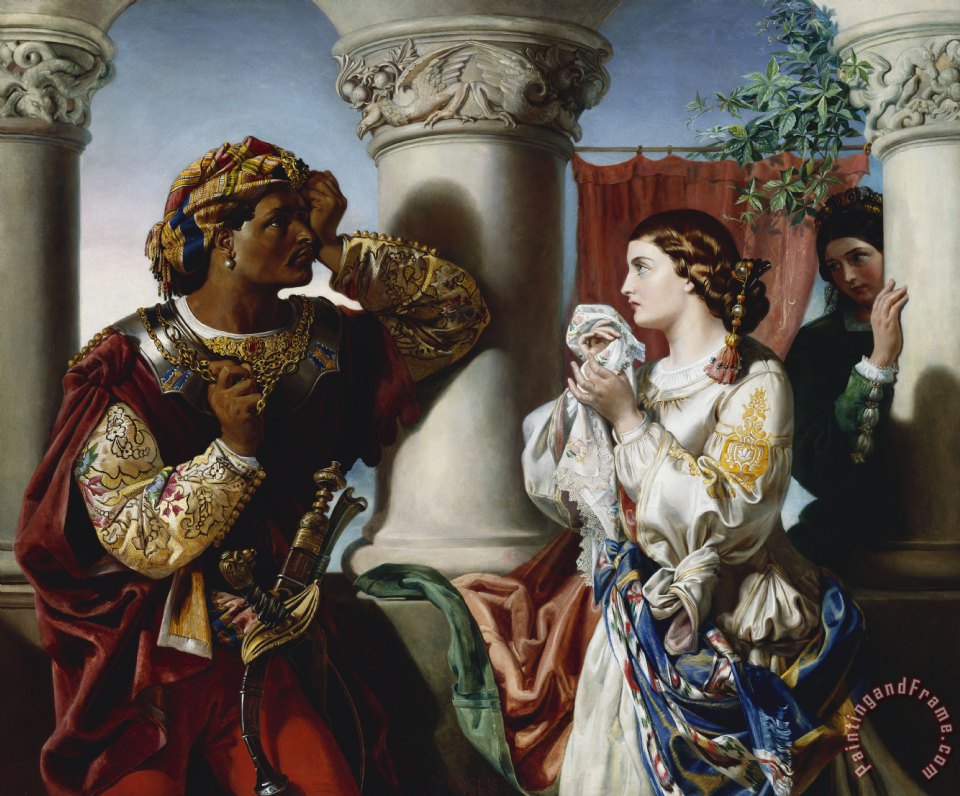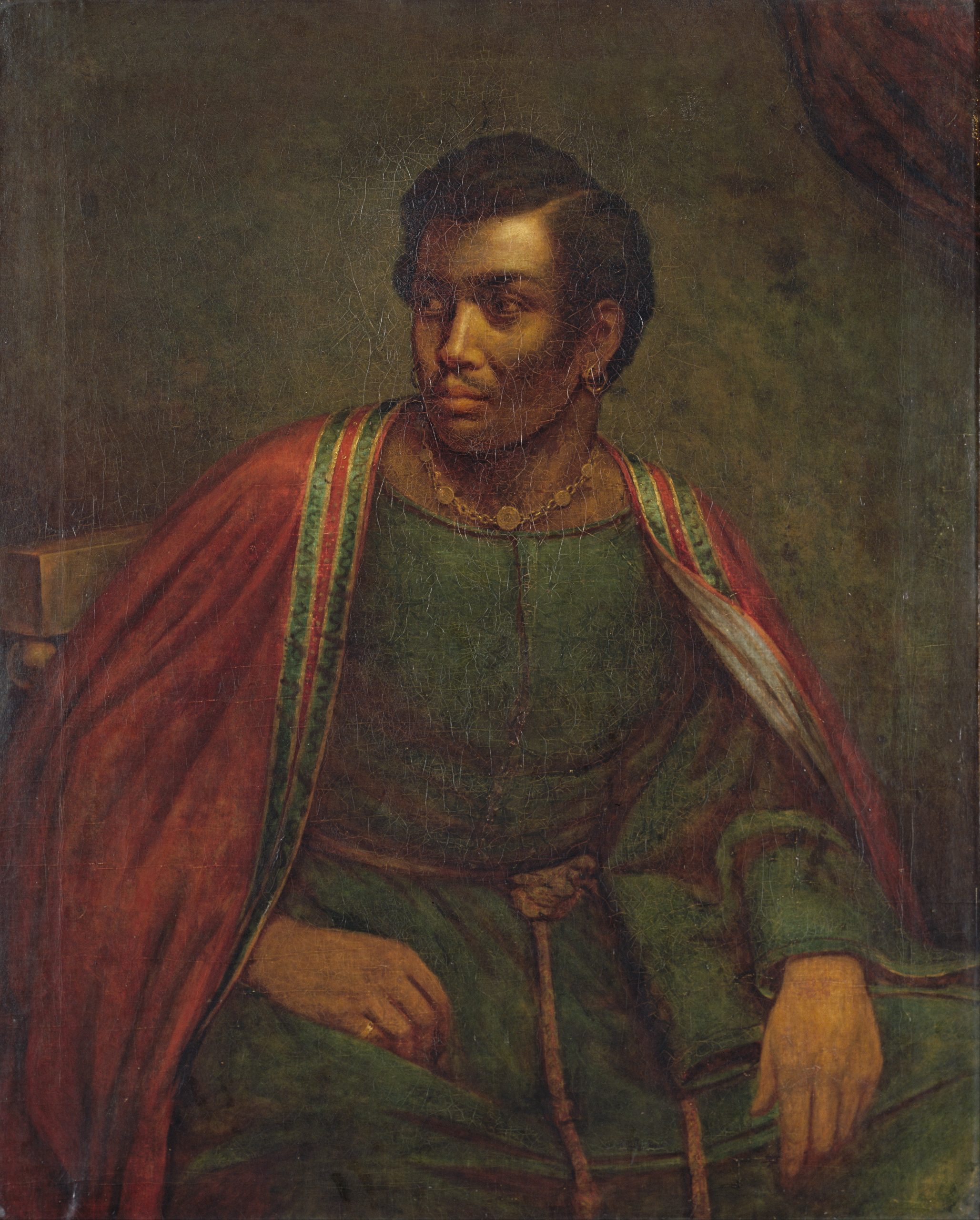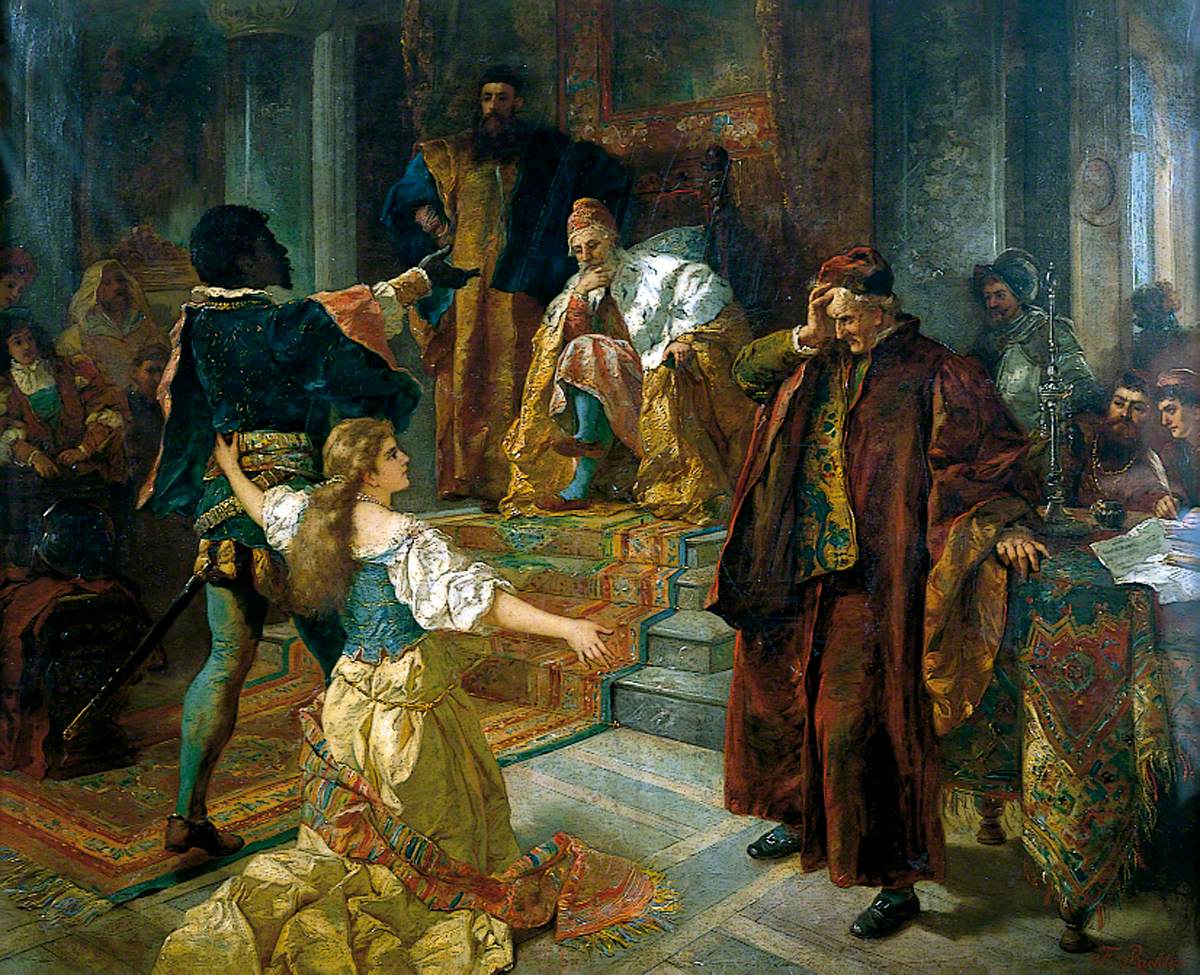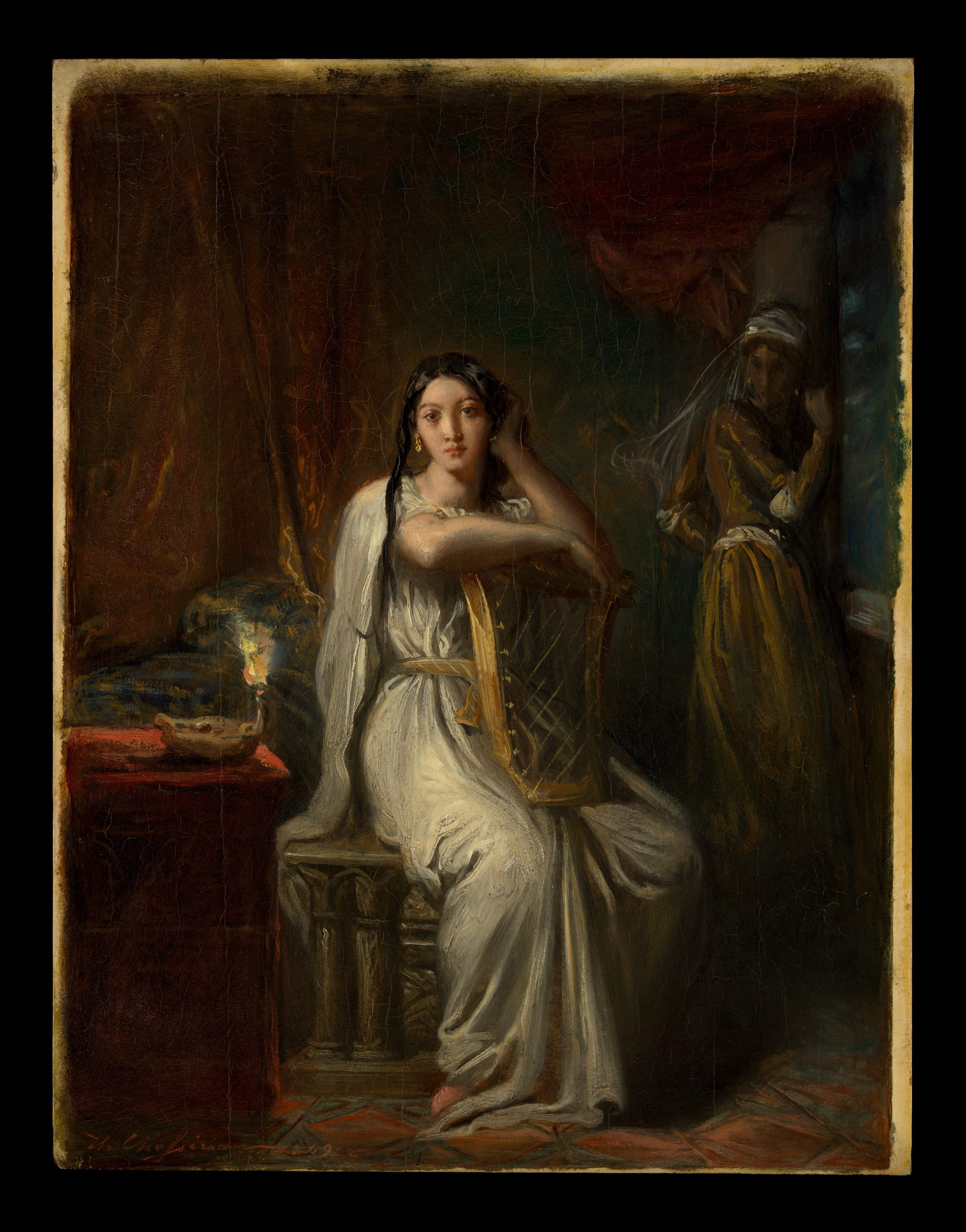10.5 Othello, Moor of Venice (1603)
Othello’s themes of psychic suffering, power and corruption, jealousy, betrayal, racism, and love resonate with audiences today. The strong bond of love between Othello and Desdemona could not overcome the diabolical machinations of Iago, intent on destroying Othello. Iago’s false accusations of Desdemona’s infidelity become a catalyst for Othello’s physical and verbal assaults.

Synopsis of Othello, Moor of Venice
In Venice, at the start of Othello, the soldier Iago announces his hatred for his commander, Othello, a Moor. Othello has promoted Cassio, not Iago, to be his lieutenant.
Iago crudely informs Brabantio, Desdemona’s father, that Othello and Desdemona have eloped. Before the Venetian Senate, Brabantio accuses Othello of bewitching Desdemona. The Senators wish to send Othello to Cyprus, which is under threat from Turkey. They bring Desdemona before them. She tells of her love for Othello, and the marriage stands. The Senate agrees to let her join Othello in Cyprus.
In Cyprus, Iago continues to plot against Othello and Cassio. He lures Cassio into a drunken fight, for which Cassio loses his new rank; Cassio, at Iago’s urging, then begs Desdemona to intervene. Iago uses this and other ploys—misinterpreted conversations, insinuations, and a lost handkerchief—to convince Othello that Desdemona and Cassio are lovers. Othello goes mad with jealousy and later smothers Desdemona on their marriage bed, only to learn of Iago’s treachery. He then kills himself (Folger Shakespeare Library)
Famous Quotations from Othello
If after every tempest come such calms,
May the winds blow till they have wakened death!
(Shakespeare, 1603, Othello, 2.1. )
Reputation, reputation, reputation! O, I have lost my reputation! I have lost the immortal part of myself, and what remains is bestial.
(Shakespeare, 1603, Othello, 2.3)
“O, beware, my lord, of jealousy:
It is the green-eyed monster which doth mock
The meat it feeds on.”
(Shakespeare, 1603, Othello, 3. 3 )

“O, now, for ever
Farewell the tranquil mind; farewell content.”
(Shakespeare, 1603, Othello, 3.3. )
A Dramatic Scene with Othello, Desdemona, Brabanzio, and Courtiers
Wilhelm Richter’s famous scene of Desdemona appealing to her father Brabanzio conveys the drama, confusion, and conflict. The painting is able to portray the action unfolding in an ornately furnished setting in Venice. Inside the palace interior, Othello addresses the duke and his cabinet, justifying his love for Desdemona and his marriage to her.

Additional Resources
Desdemona

This painting is based on a print, part of a suite of etchings by Chassériau illustrating Shakespeare’s Othello, which was published in Paris in 1844. It depicts act 4, scene 3 of the play, a final moment of calm preceding Desdemona’s murder by her husband, Othello. Desdemona’s maid, Emilia, who was complicit in orchestrating the crime, shrinks away, cringing at the knowledge of what is about to occur. The lyre Desdemona holds was not described by Shakespeare; Chassériau observed it in an 1836 production in which the role was performed by the celebrated singer Maria Malibran Garcia (1808–1836), called La Malibran. (Metropolitan Museum of Art Website).
In an act of jealousy and psychic turmoil, Othello kills Desdemona.
“I kissed thee ere I killed thee: no way but this,
Killing myself, to die upon a kiss.
(Shakespeare, 1603, Othello, 5. 2. )

Metropolitan Museum of Art Notes
“After Delacroix’s successful Hamlet lithographs appeared in 1843, Chassériau responded with a series of etchings devoted to Shakespeare’s Othello. This example encapsulates the play’s climax in act 5, in which the title character is undone by his tragic error concerning his wife, Desdemona. Having smothered her, he now kneels despairingly by the bed as her attendant Emilia reveals that “honest Iago,” who told Othello she had been unfaithful, is a jealous manipulator:
“Now lay thee down and roar. / For thou has killed the sweetest innocent, / That did ever lift up eye.”
By choosing etching, Chassériau was able to both include fine detail and convey his expressive conception of form.” (Metropolitan Museum Art Notes)
Additional Resources

